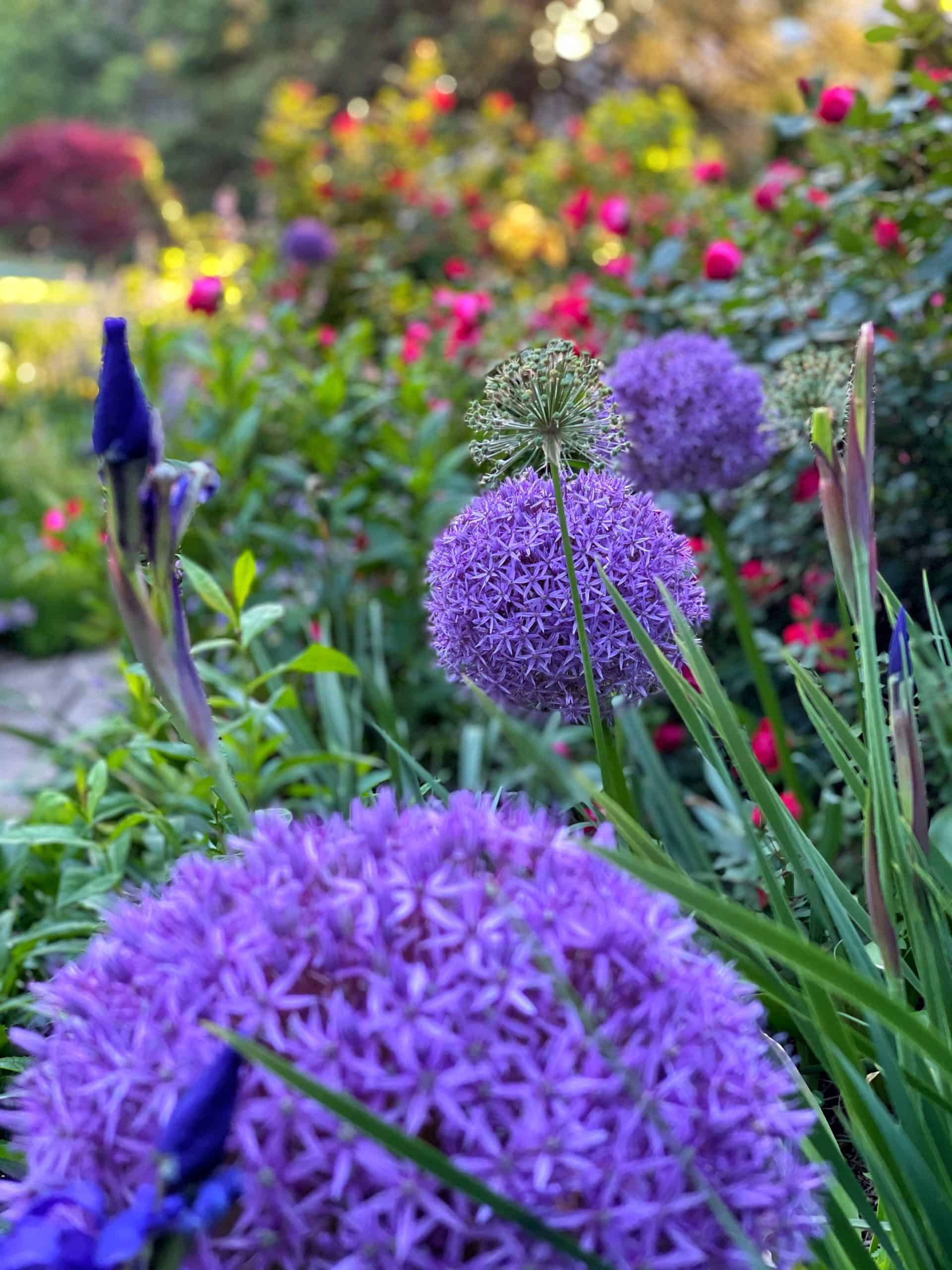Enjoy colorful blooms year-round without the constant upkeep. Discover the secrets to a low-maintenance everblooming garden.
Imagine stepping into your garden and being greeted by a vibrant tapestry of colors and fragrances, no matter the season. Creating a low-maintenance everblooming garden is easier than you might think! With careful planning and the right plant choices, you can enjoy a beautiful and dynamic outdoor space that requires minimal upkeep. In this guide, we’ll explore the key steps to designing and maintaining a garden that blooms from spring to fall.
(Posts on stacyling.com may contain affiliate links. Click HERE for full disclosure.)
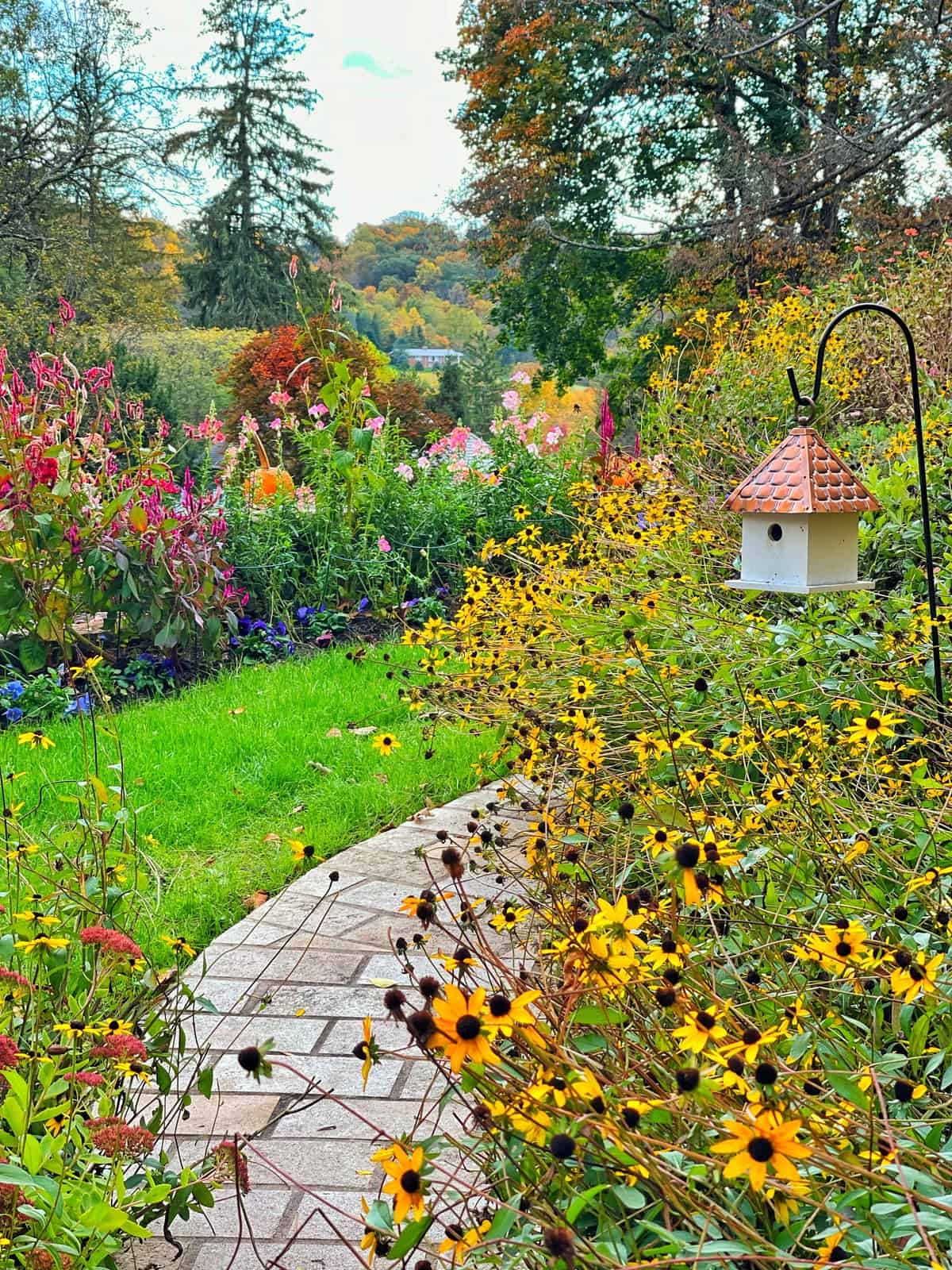
Planning Your Low-Maintenance Everblooming Garden
1. Choose the Right Location
Before you start planting, consider the location of your garden. Most flowering plants thrive in sunlight, so choose a spot that receives at least 6 hours of direct sunlight each day. If your garden is shaded, don’t worry! There are many beautiful shade-loving plants that can add color and texture to your garden.
Also, pay attention to microclimates within your garden. These are areas that may have slightly different temperatures or sun exposure. Utilize these microclimates to create optimal conditions for different plant species, extending their blooming period.
(If you are not sure what your hardiness zone is, check here.)
2. Analyze Your Soil
Healthy soil is essential for a thriving garden. Before you plant, get your soil tested to understand its composition and pH level. This will help you determine if you need to amend your soil with compost, fertilizer, or other organic matter.
Soil test kits are widely available at nurseries and big box stores. But it’s best to reach out to your local cooperative extension because the test kits are better and they can help you interpret the results.
That said, in addition to testing the soil, it’s important to add organic matter to keep the soil healthy. So adding compost, leaf mold, and mulch will help improve the health of your soil.

3. Select a Variety of Plants for Your Low-Maintenance Everblooming Garden
The key to an everblooming garden is diversity! Select a wide range of plants with different bloom times and growth habits. Here’s a breakdown of the types of plants to consider:
- Annuals: These plants complete their life cycle in one year, providing continuous color throughout the growing season. Popular choices include petunias, marigolds, and zinnias.
- Perennials: These plants come back year after year, providing structure and long-lasting blooms. Consider options like coneflowers, black-eyed Susans, and salvia.
- Bulbs: Bulbs add pops of color in spring and fall. Daffodils, tulips, and hyacinths are classic spring bloomers, while alliums and crocuses provide fall interest.
- Shrubs: Shrubs offer structure and year-round interest with their foliage, flowers, and berries. Consider evergreens like boxwood and holly, as well as flowering shrubs like hydrangeas and spireas.
When selecting plants, consider their bloom times to ensure continuous color throughout the seasons. Also, incorporate plants with interesting foliage and textures to add visual appeal even when flowers are not in bloom.
Look at your local nursery and gardens to get ideas for a flower garden that continually blooms. Stop by monthly to see what’s blooming and when. If you decide to grow short-lived flowers like bearded iris and peonies, you can plant different varieties to extend their bloom time.
Design Tip: Annual flowers are a great option to get season-long color while perennials, shrubs, and bulbs go through their bloom cycles.
Plan Ahead
When I design a garden, I prefer low-maintenance plants that will give me more bang for my buck. Some flowers will bloom for several weeks, while others will last much less. Consider how long plants bloom so there is some overlap in the flowers. But even with this consideration, there will still be lulls in the borders. So it’s important to plant spring and fall annuals to provide color throughout the growing season.

Low-Maintenance Plant Recommendations for an Everblooming Garden
To help you get started, here are some easy-care plants that bloom beautifully throughout the seasons in New Jersey (Zone 6b):
Spring
- Hellebores: These shade-loving perennials bloom in early spring, adding a touch of color when most other plants are still dormant. To learn how to grow hellebores, read this post.
- Daffodils: These cheerful bulbs are a classic sign of spring. They come in a variety of colors and are very easy to grow. To learn more about how to plant daffodils and care for the blooms, read this article.
- Forsythia: This shrub bursts into bloom with bright yellow flowers in early spring.
- Tulips: These classic spring-blooming bulbs come in a rainbow of colors and add a touch of elegance to any garden. To learn more about how to grow tulips, read this post.
- Hyacinths: These fragrant bulbs are another spring favorite. They come in a variety of colors and are perfect for planting in containers or along walkways.
- Alliums: These ornamental onions produce globe-shaped flower heads in a variety of colors, including purple, pink, and white.
- Dicentra (Bleeding Heart): This charming perennial has heart-shaped flowers that dangle from arching stems.
- Pansies: These cheerful annuals are a great way to add color to your garden in early spring. They come in a wide variety of colors and are very easy to care for. To learn how to grow pansies, read this post.
- Sweet Alyssum: This low-growing annual produces a carpet of fragrant white flowers. It’s perfect for edging flower beds or planting in containers.
- Spirea: This shrub produces clusters of pink or white flowers in spring. It’s a low-maintenance plant that is easy to grow.

Summer
- Coneflowers: These tough perennials are a favorite of pollinators and come in a variety of colors. To learn how to grow coneflowers, read this post.
- Bee Balm: This fragrant perennial attracts bees and butterflies with its showy flowers.
- Hydrangea: These popular shrubs produce large clusters of flowers in a variety of colors. To learn more about how to grow hydrangeas, read this post.
- Geraniums: These annuals are a classic choice for summer gardens. They come in a variety of colors and are very easy to care for.
- Petunias: These popular annuals come in a wide variety of colors and bloom all summer long.
- Coreopsis: This cheerful perennial produces a profusion of yellow flowers. To learn more about how to grow coreopsis, check out this post.
- Nepeta (Catmint): This fragrant perennial attracts pollinators and is also a favorite of cats. To learn more about how to grow nepeta, read this post.
- Russian Sage: This drought-tolerant perennial produces spikes of purple flowers.
- Marigolds: These easy-to-grow annuals are a great way to add color to your garden. They come in a variety of colors and are also known to deter pests.
- Celosia: This annual produces unique, colorful flower heads that resemble cockscombs. To learn more about how to grow celosia, check out this post.
- Zinnias: This annual is easy to grow and produces colorful flowers that attracts pollinators. To learn more about how to grow zinnias, read this post.

Fall
- Pansies: These versatile annuals can be planted in both spring and fall for continuous color.
- Aster: This perennial produces a profusion of daisy-like flowers in a variety of colors.
- Marigolds: These annuals continue to bloom well into fall.
- Rudbeckia (Black-eyed Susan): This cheerful perennial produces bright yellow flowers with dark centers. To learn how to grow rudbeckia, please read this post.
- Sedum ‘Autumn Joy’: This succulent perennial produces large clusters of pink flowers that turn a beautiful copper color in fall. To learn how to grow sedum autumn joy, read this post.
- Joe Pye Weed: This tall perennial produces large clusters of pink or purple flowers that attract butterflies.
- Japanese Anemone: This elegant perennial produces delicate flowers in shades of pink and white.
- Celosia: This annual continues to bloom well into fall.
- Hydrangea: Some varieties of hydrangea, like the panicle hydrangea, bloom in late summer and fall.
- Dahlia: These tubers produce stunning flowers in a wide variety of colors and forms. While not super low-maintenance, if you are up for a little more work, dahlias are fairly easy to grow and provide long-lasting color and blooms. To learn more about growing dahlia flowers, read this post.

Maintaining Your Low-Maintenance Everblooming Garden
1. Implement Succession Planting
To keep your garden blooming non-stop, use succession planting. This technique involves sowing or planting new flowers throughout the season to replace those that have finished blooming. As one set of flowers fades, new ones will take their place, ensuring a continuous cycle of blooms.
2. Provide Adequate Care
- Watering: Water your garden regularly, especially during hot, dry periods. How much or how little will change during different seasons and weather patterns.
- Mulching: Apply a layer of mulch around your plants to help retain moisture and suppress weeds.
- Fertilizing: Feed your plants with a balanced fertilizer according to their needs.
- Deadheading: Remove faded blossoms to encourage plants to produce more flowers.

3. Pest Control
Protect your plants from deer, rabbits, and other pests. This can be done through a variety of methods:
- Fencing: Install a physical barrier, like a fence, to keep animals out of your garden.
- Repellents: Use deer and rabbit repellents to deter pests from eating your plants. There are many different types of repellents available, so be sure to choose one that is safe for your plants and pets.
- Resistant Plants: Choose plants that are known to be deer and rabbit resistant.
Because I live in New Jersey with high deer pressure, I design gardens with deer-resistant plantings and spray all of my high-risk plants. While I typically lean towards deer-resistant plantings, I do plant some things that require a little more protection. (Here are my 7 best secrets to keep deer from eating your garden plants.)
In addition to the deer resistance list, I spray high-risk plants with two different deer repellents. One repellent is systemic and it not only protects plants from deer damage, but from other critters too. The other repellent is a little less stinky, and doesn’t clog as easily, but is a topical application only. I swear by this stuff because I use it all the time and it works for me. While the bottle has application directions, I am more aggressive with the spray schedule for higher-risk plants.
I start spraying them when they emerge from the ground, then again about one to two weeks later, depending on the growth. And then I spray every three to four weeks after. This method has worked for me for years and if you try it, I hope it works for you too.
You can also try this method for using deer repellents too.

Final Thoughts About Creating a Low-Maintenance Everblooming Garden
My 25+ years of experience with flower gardening have taught me that an everblooming garden is achievable with careful planning and the right plant choices. I’ve always aimed for a garden filled with color, texture, and continuous blooms throughout the growing season.
Through trial and error, I’ve learned the importance of soil health, understanding bloom cycles, and using succession planting to maintain a vibrant display.
I hope this guide helps you create your own beautiful and thriving everblooming garden!
Does your garden grow, bloom, and change from spring through fall? What are your favorite flowers to grow? Let’s chat about it more in the comments below.
For more information about garden design basics, check out this post from the Cornell Cooperative Extension.
To drill down on more beginner gardening techniques and tips, please read these posts:
- Flower Gardening 101
- Growing a Cut Flower Garden for Beginners
- Container Garden Ideas for Beginners
- How to Start a Vegetable Garden
- Herb Gardening for Beginners
Thanks for joining me on the blog today! Enjoy a beautiful day!
Thank you so much for following along.
Enjoy a beautiful day! xo


Tour My Gardens Through the Seasons
If you want to get more ideas for a 4 season flower garden that’s always in bloom, check out my new gardens throughout the season you can see them here:
- Early Spring Garden Tour 2023
- New Gardens Tour
- Early Spring Garden
- Early Summer Garden Tour
- Gardening for Summer Highs and Lows
- The Prettiest Fall Garden Ideas
But I also share weekly pics of the gardens in my Sunday updates. Subscribe here so you don’t miss out on the gardening inspo!
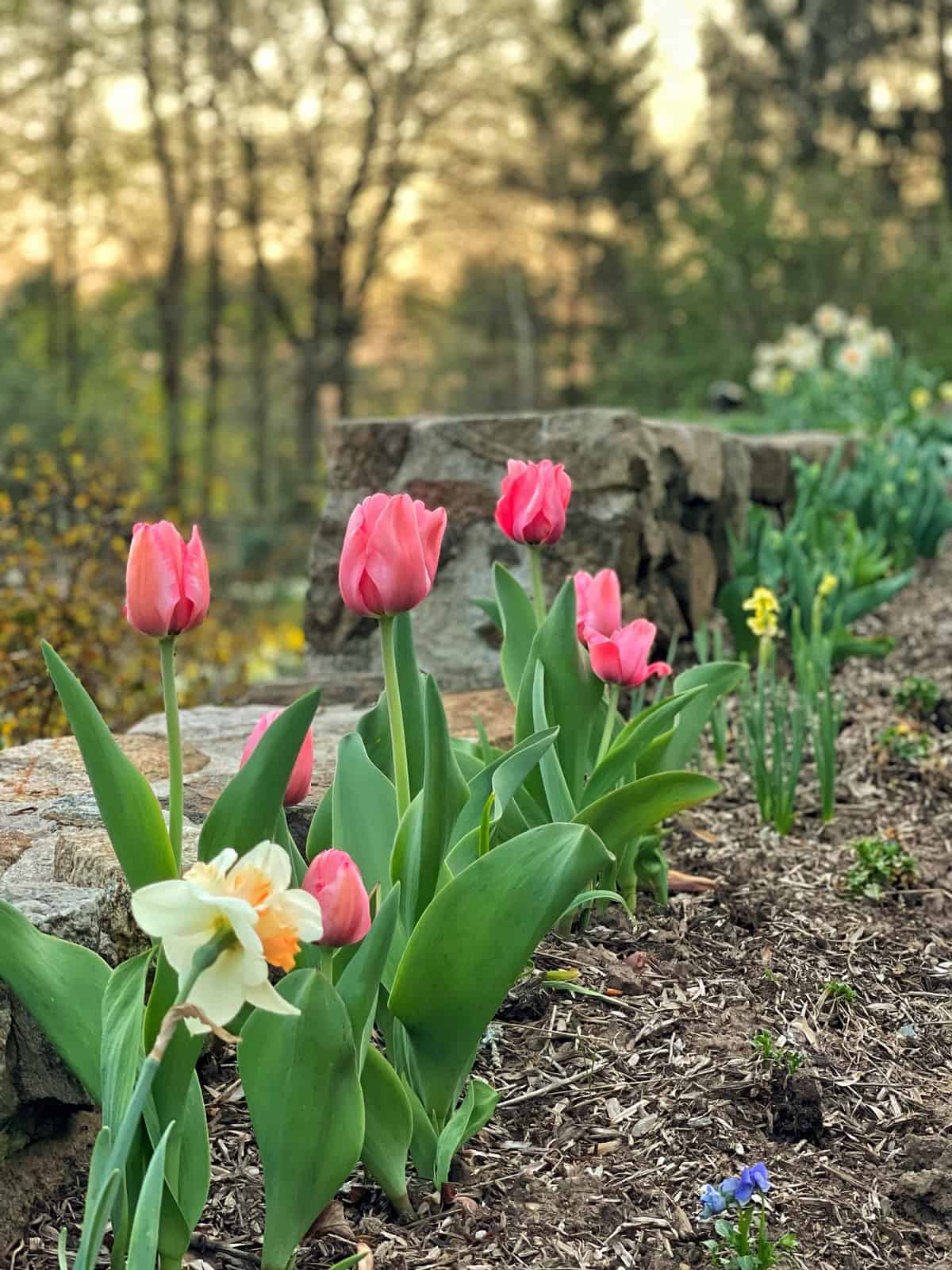






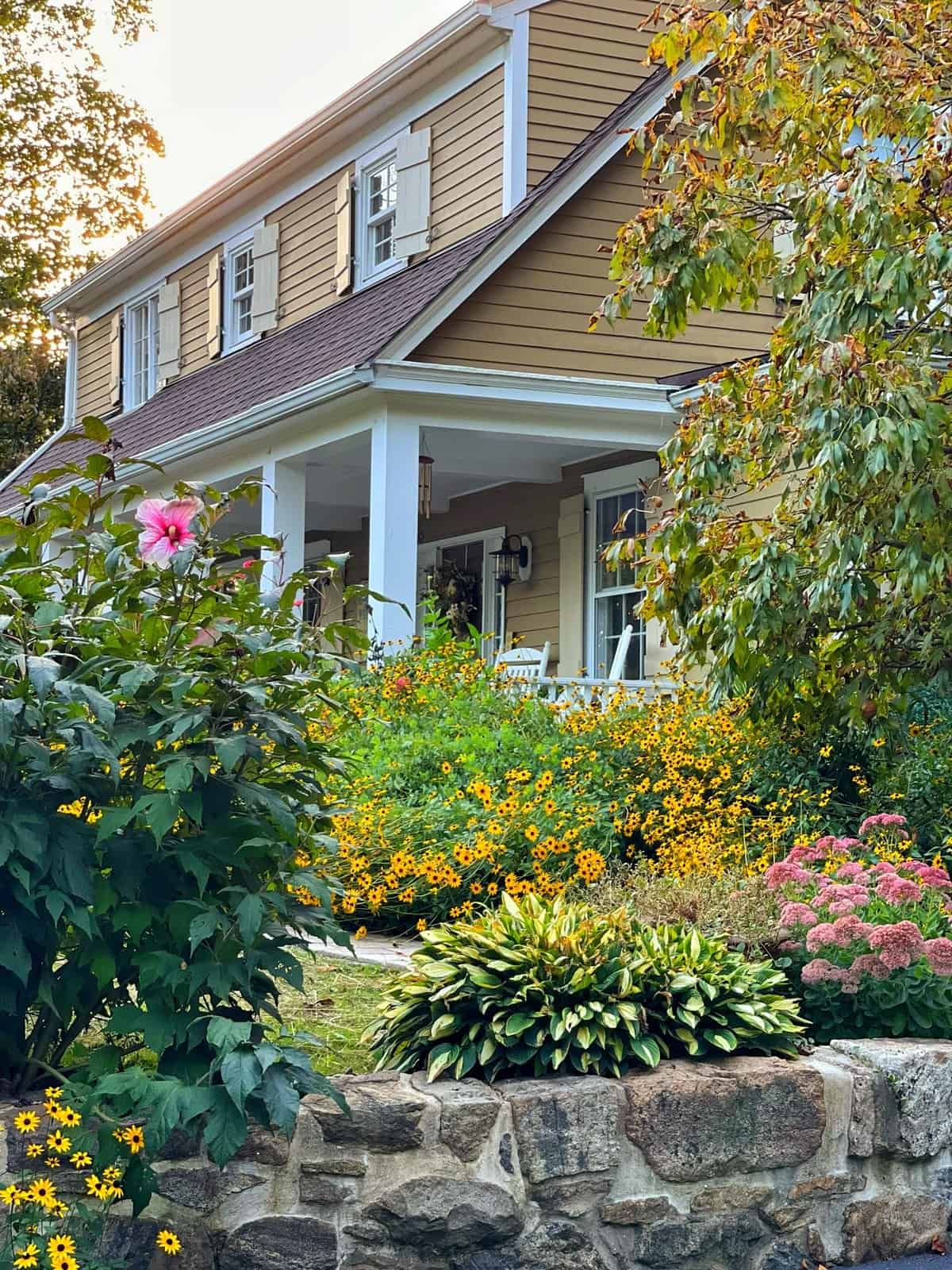



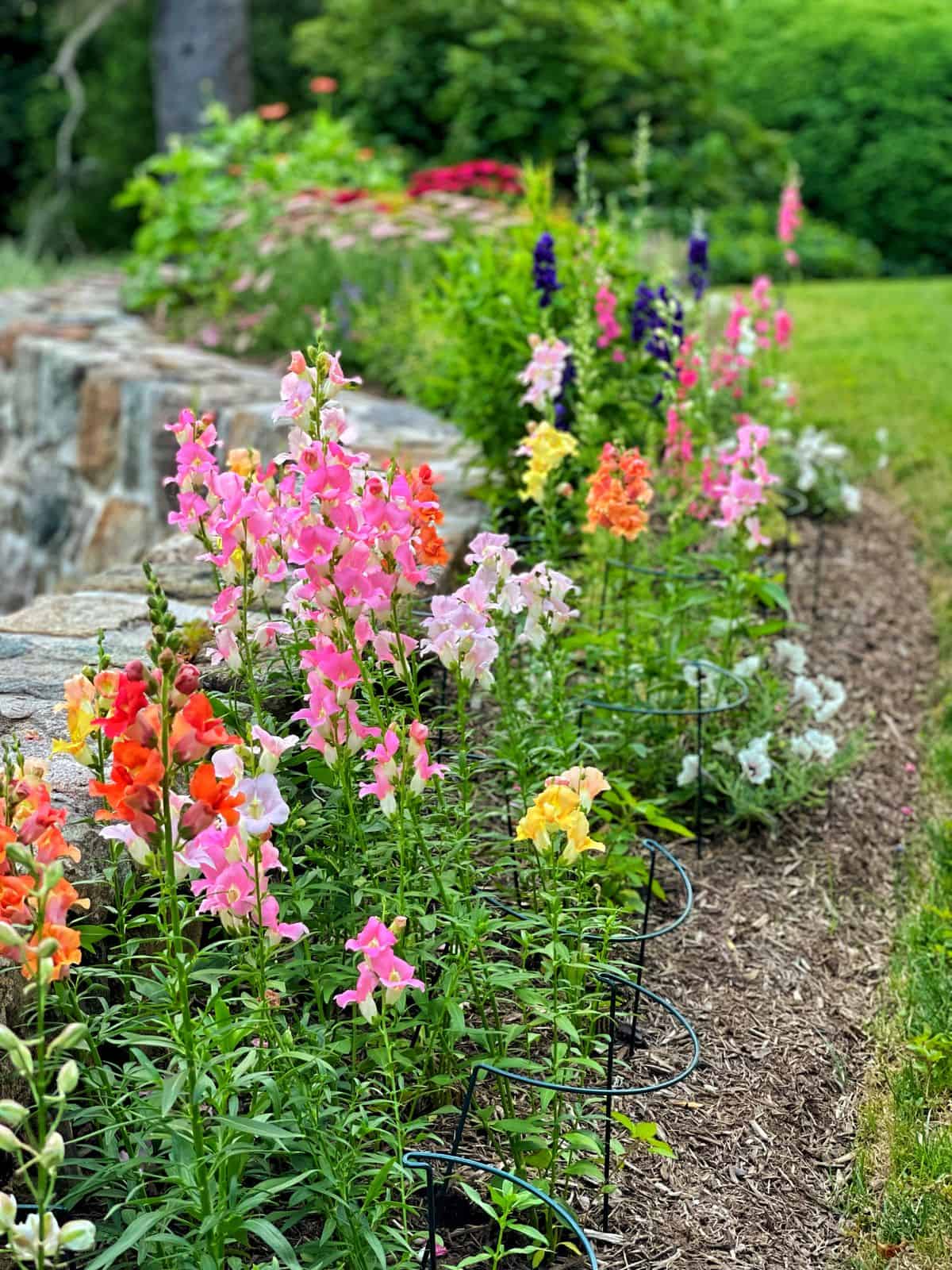
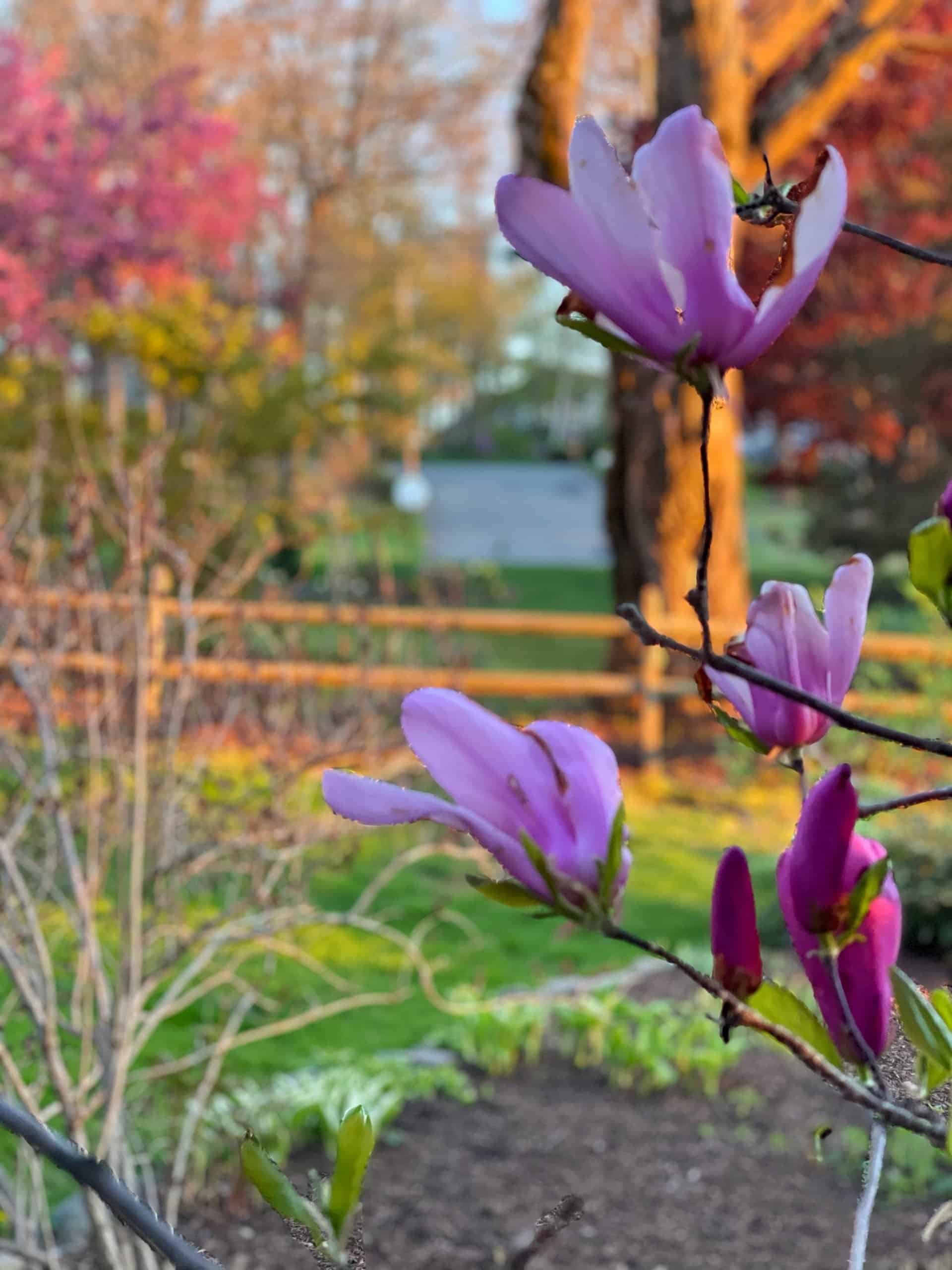









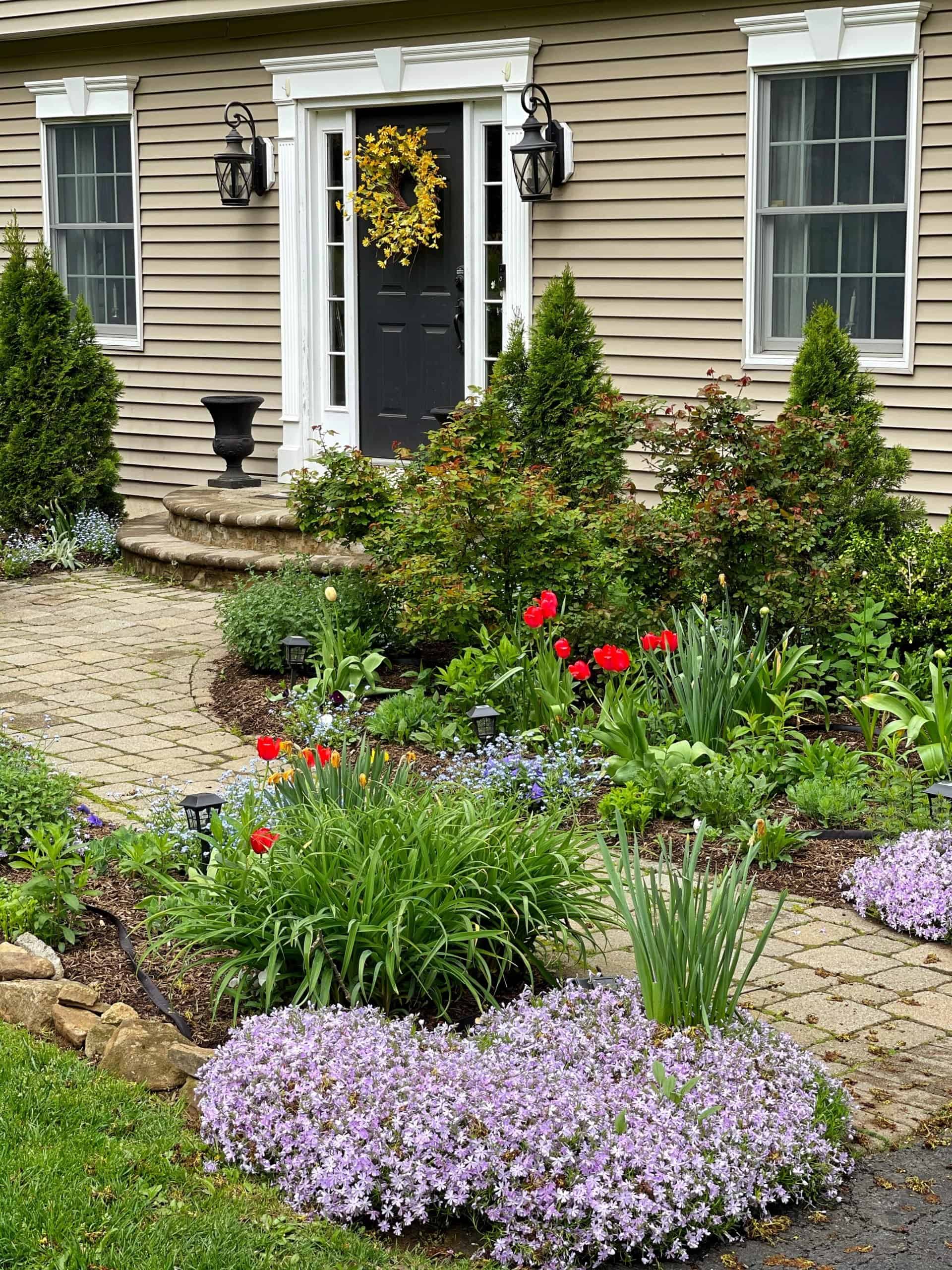


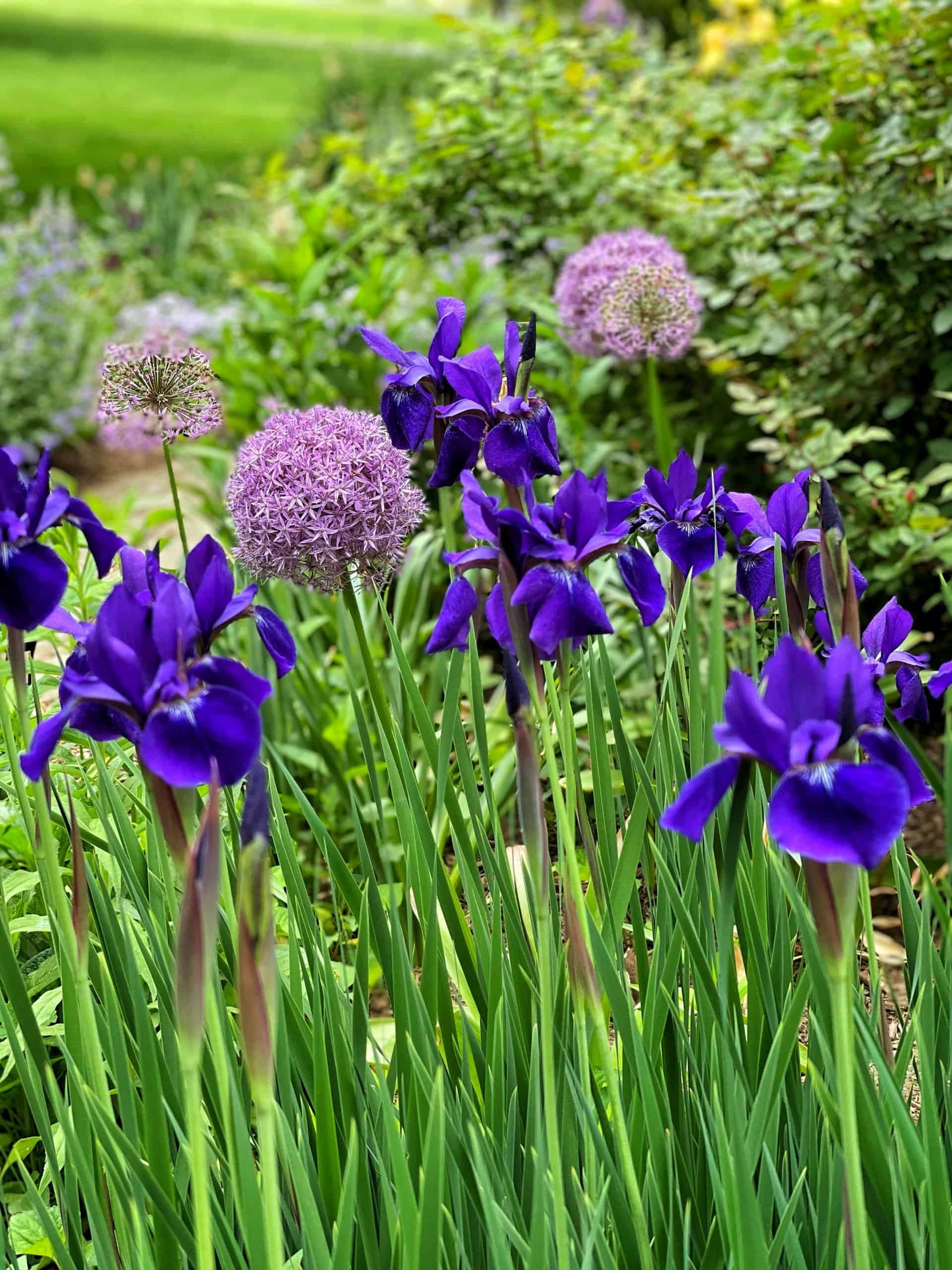
Both plants are highly deer resistant.
